Posey's Tips & Tricks
Microsoft Ignite 2020 Reaction, Part 2: Standouts from the Tech Demos
Despite the strangeness of the keynote, Microsoft pulled off some its most geek-worthy product demos at Ignite this week.
In Part 1 of my Microsoft Ignite 2020 series, I talked about some reasons why turning a major technology event like Ignite into a virtual conference can be problematic, and why I didn't walk away from the keynote with an optimistic feeling about the world returning to normal anytime soon.
Despite those perceptions, however, the opening keynote did not disappoint when it came to discussions of technology. As such, I wanted to wrap up this series by talking about some of the technology that caught my attention.
One of the first things Microsoft talked about in the keynote was the way in which Azure has been evolving. Before the keynote, it would have been safe to say that Microsoft has gone all-in on Azure. Even so, Microsoft definitely took Azure to the next level with some of its recent announcements. According to the keynote, there are now 61 Azure regions around the world. Additionally, Microsoft discussed Azure edge solutions, an underwater Azure datacenter and a new offering called Azure Orbital that will be used to control spacecraft communications.
Another thing Microsoft demonstrated was a new version of Microsoft Flight Simulator. As a real-world pilot, I was geeking out when Nadella showed off Flight Simulator 2020. I especially loved that Nadella took the time to show Flight Simulator's nearly 40-year history, and that the demo ended with a Microsoft Ignite flag on top of the Seattle Space Needle.
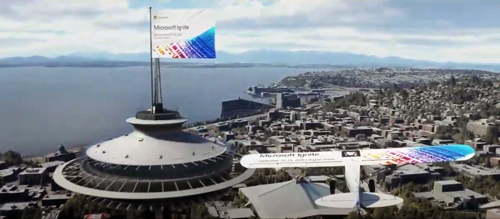 [Click on image for larger view.] Figure 1: An aircraft painted in a Microsoft Ignite livery buzzes around the Space Needle and its Microsoft Ignite flag.
[Click on image for larger view.] Figure 1: An aircraft painted in a Microsoft Ignite livery buzzes around the Space Needle and its Microsoft Ignite flag.
Even though Microsoft has been teasing Flight Simulator 2020 for about a year, I never expected to see it demoed during an Ignite keynote. Of course, there is a method to the madness; Flight Simulator 2020 is no ordinary video game. It leverages Microsoft's entire cloud computing stack, including things like Azure AI, Bing Maps, spatial computing and more. Microsoft has pulled all of these technologies together to create a visually stunning digital twin of the entire world. In my opinion, showcasing Flight Simulator 2020 was the perfect way to illustrate what these technologies are collectively capable of.
During the keynote, Microsoft also showed off some of what it has been doing with its Surface hardware as a part of its Teams demos. One demo involved someone working from a Surface Duo, then using their Surface Pen on a Surface Hub 2S. Normally, the Surface Pen is paired to a specific device, so it was really great to see that, going forward, pens will be able to be used on multiple devices without the need for pairing.
The demo also showed a new feature for "handwriting beautification." The idea is that Surface devices will be able to convert messy handwriting (like mine) into something that is easier to read. You can see before and after pictures below.
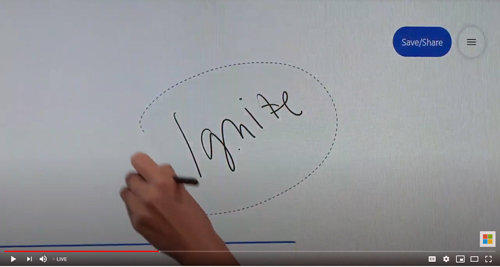 [Click on image for larger view.] Figure 2: This is what the messy handwriting looked like before Surface cleaned it up.
[Click on image for larger view.] Figure 2: This is what the messy handwriting looked like before Surface cleaned it up.
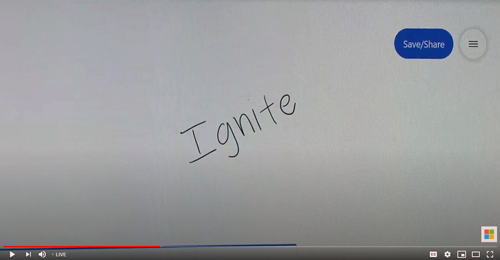 [Click on image for larger view.] Figure 3: This is the "beautified" handwriting.
[Click on image for larger view.] Figure 3: This is the "beautified" handwriting.
As fun as the inking demonstration might have been, I was especially captivated by one technology demonstration. Early in the keynote, I noticed that Microsoft CEO Satya Nadella was standing in front of a shelf containing various items, one of which was a model of the Orion spacecraft, which you can see in Figure 4. As someone who has spent a lot of time training in an Orion capsule, the display naturally caught my attention, but I never expected it to become a topic of the conversation. I just assumed it was there for illustrative purposes since the keynote was used to introduce Azure Orbital. How wrong I was!
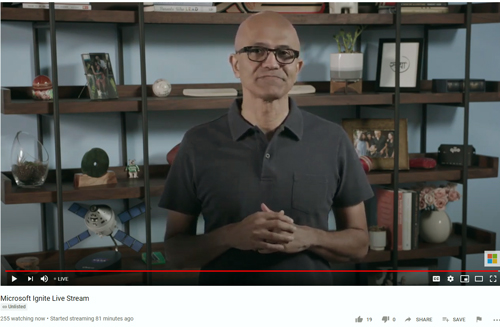 [Click on image for larger view.] Figure 4: Nadella's display included an Orion spacecraft.
[Click on image for larger view.] Figure 4: Nadella's display included an Orion spacecraft.
Microsoft showed a video of how Microsoft Mixed Reality is being used to assemble the crew seat onboard Orion. As you can see in Figure 5, the seats are complicated. They have to be strong, lightweight, adjustable and able to fold down and stowed when they are not needed. Having personally spent so much time in these seats, it was super cool for me to see Microsoft HoloLens being used in the assembly process.
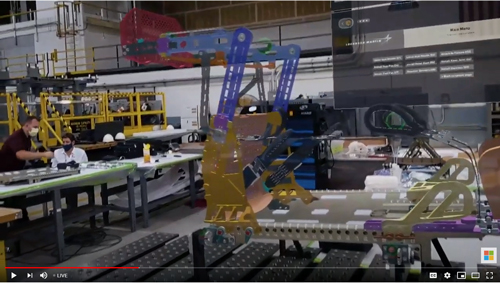 [Click on image for larger view.] Figure 5: Microsoft Mixed Reality is being used in the assembly of the Orion spacecraft's seats.
[Click on image for larger view.] Figure 5: Microsoft Mixed Reality is being used in the assembly of the Orion spacecraft's seats.
All in all, the technology that Microsoft demonstrated in its 2020 Ignite keynote was extremely impressive. If you would like to check out the keynote for yourself, you can find it online here.
About the Author
Brien Posey is a 22-time Microsoft MVP with decades of IT experience. As a freelance writer, Posey has written thousands of articles and contributed to several dozen books on a wide variety of IT topics. Prior to going freelance, Posey was a CIO for a national chain of hospitals and health care facilities. He has also served as a network administrator for some of the country's largest insurance companies and for the Department of Defense at Fort Knox. In addition to his continued work in IT, Posey has spent the last several years actively training as a commercial scientist-astronaut candidate in preparation to fly on a mission to study polar mesospheric clouds from space. You can follow his spaceflight training on his Web site.